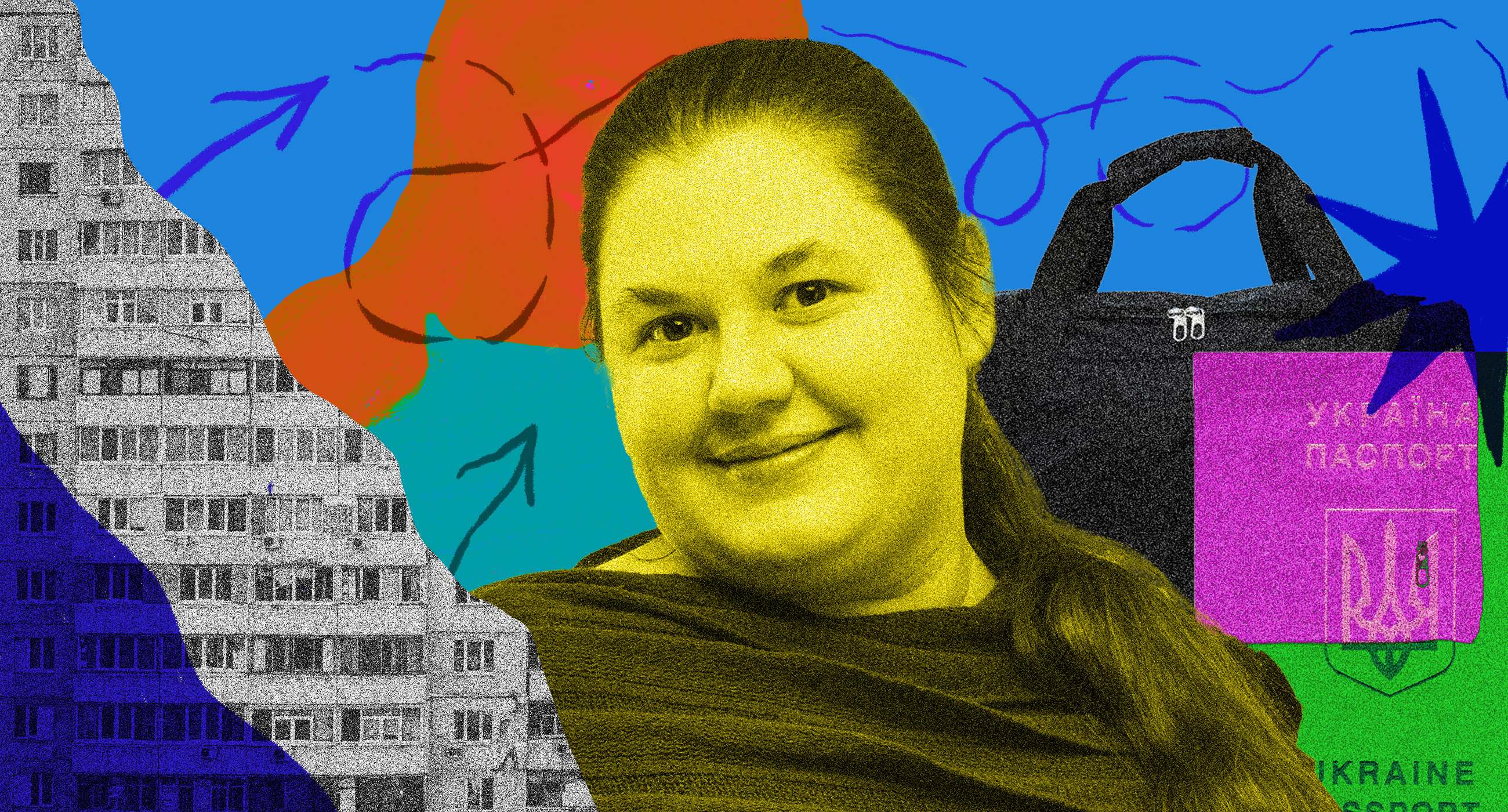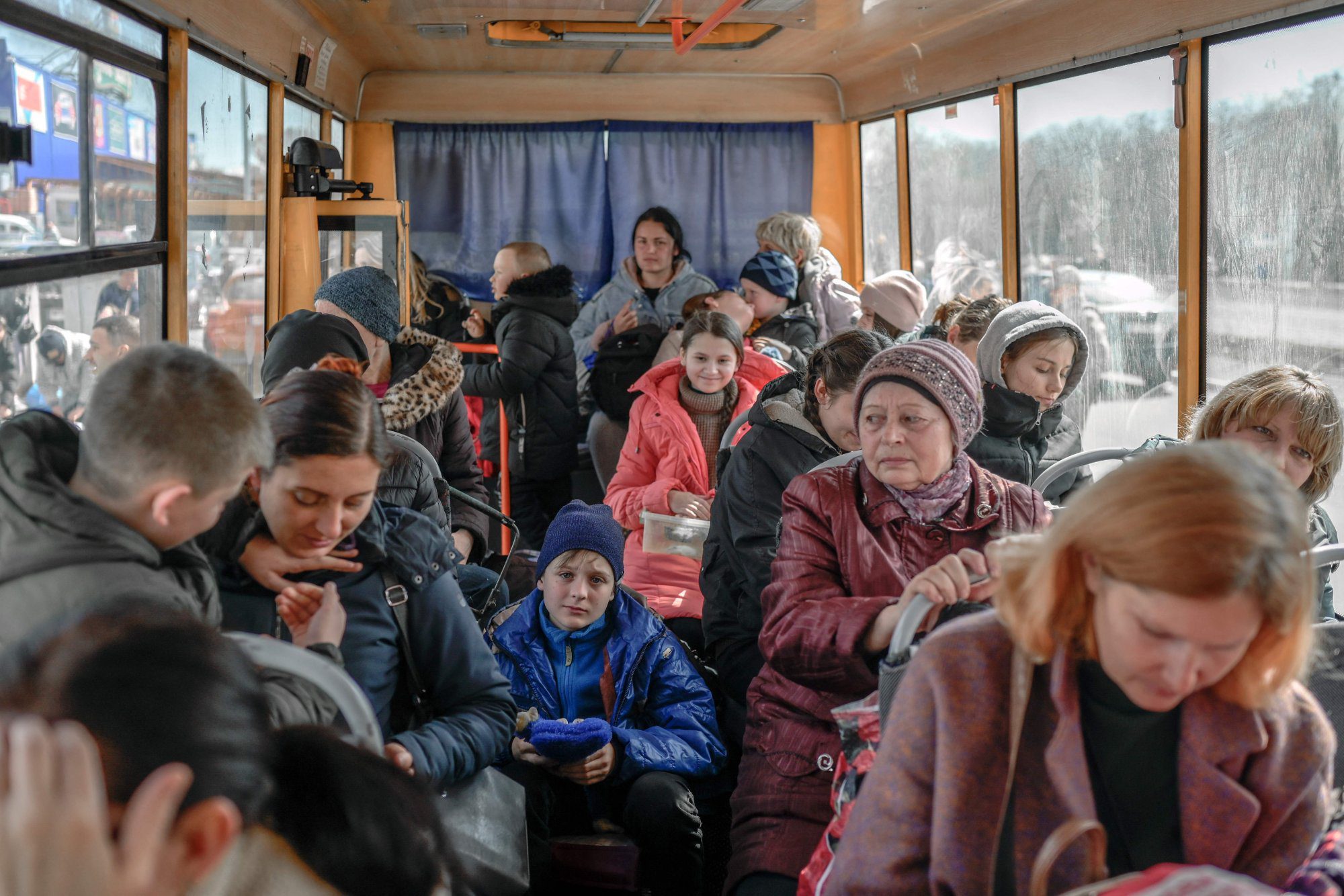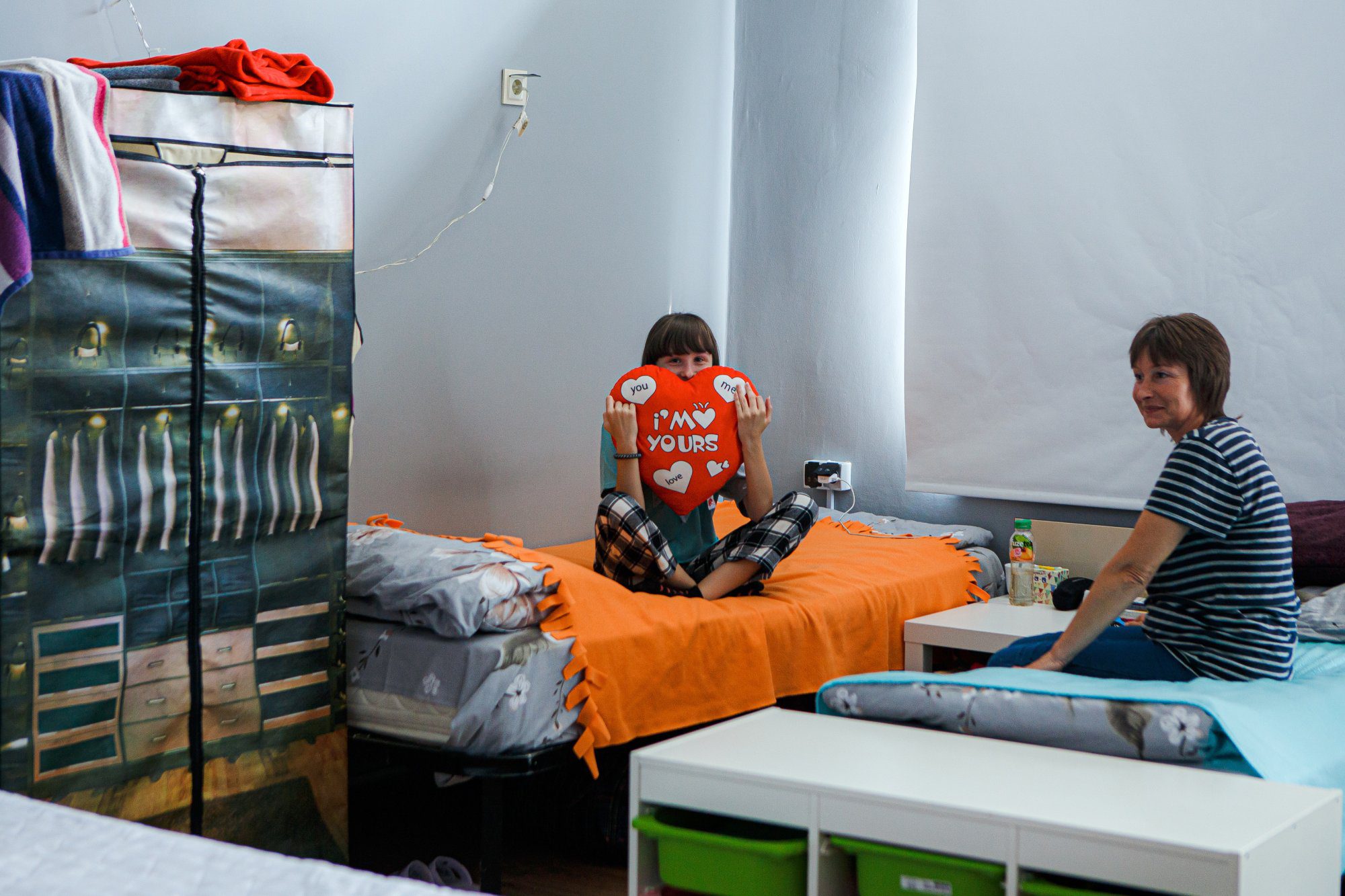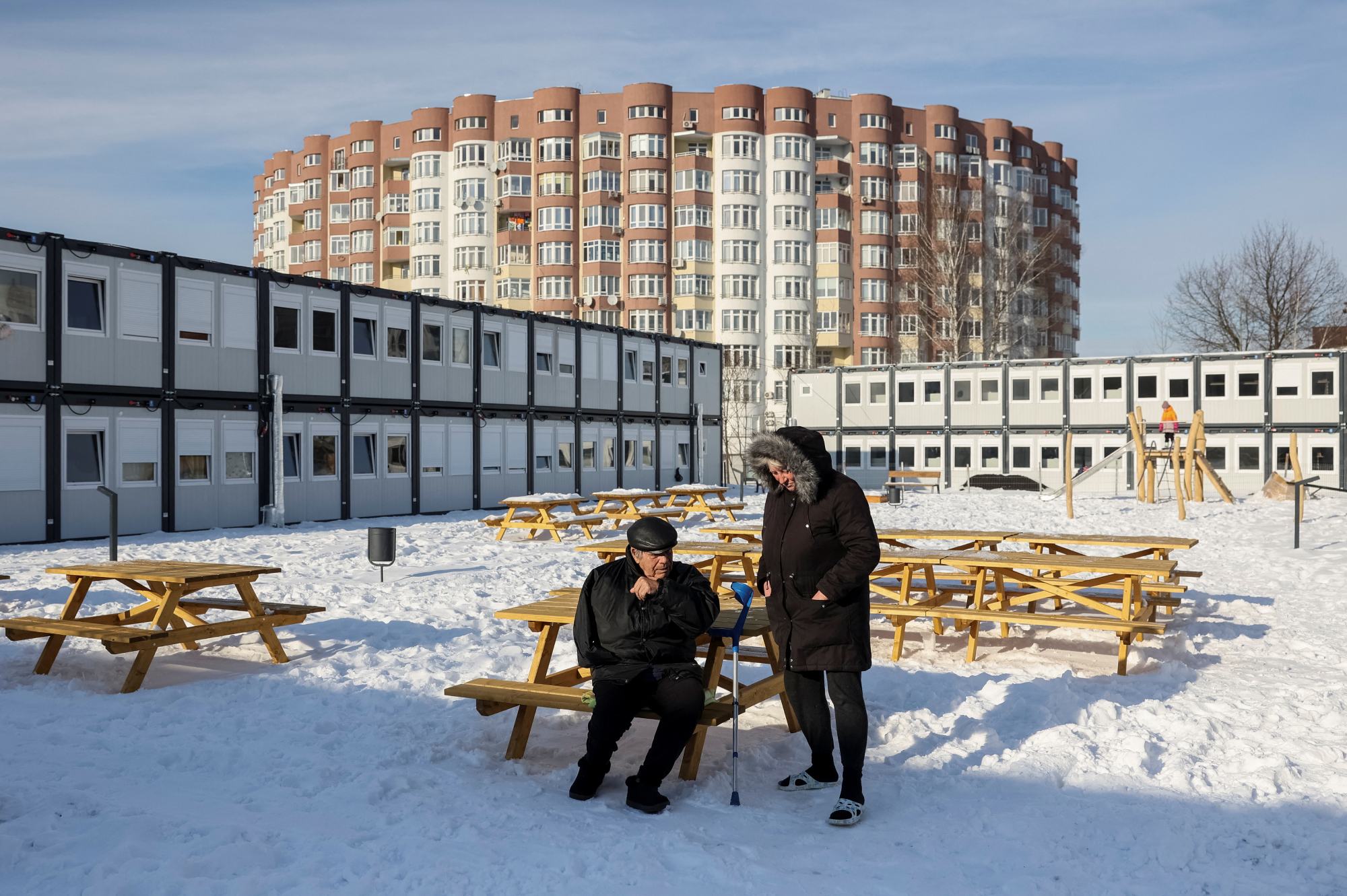What you need to know about the system of social protection of the population during the war and how it can be supported. Lawyer Valeriya Vershynina explains the situation with assistance to internally displaced persons in the country

The full-scale war of the Russian Federation against Ukraine caused a colossal increase in the number of internally displaced persons. The social protection system had to reconfigure its work in extreme conditions and look for opportunities to work with the new workload. Local authorities, in cooperation with the public sector, are forced to invent new approaches to social protection and support for people affected by military operations.
Zaborona (VA: this is the name of the media outlet) spoke with Valeria Vershynina, a lawyer and program manager of the Stabilization Support Services Foundation, how support for internally displaced persons has changed since 2014, how the country cares for displaced people today, and how the public sector helps the social protection system to restore stable work.
About the project that supports the system of social protection of the population
In 2014, Ukraine faced the phenomenon of internal displacement for the first time. The policy regarding payments to displaced persons and issues of protection of their rights was developed situationally, based on the vision of the dynamics of the conflict, which was formed mostly in 2015-2016. After February 24, the number of displaced persons increased, but the resources of the communities did not. Therefore, in the first months of active military operations, we focused on humanitarian assistance: provision of food and hygiene items, assistance to communities in the organization of collective centers, and preparation for winter (repairs of damaged houses, provision of construction materials).
But our main activity of our NGO is institutional support of the social protection system in working with people who suffered as a result of the war of the Russian Federation against Ukraine and strengthening the voice of internally displaced persons in communities. One of these projects, aimed at improving the social protection of IDPs, is implemented with the support of the Office of the United Nations High Commissioner for Refugees. We help to modernize services for registration and processing of payments to displaced persons, provide computer equipment for setting up new jobs in social protection institutions, improve the interaction of USZNs [USZN — population social protection department] with IDPs, and connection of legal and advocacy methods.
About the change in the attitude of society and the state toward IDPs since 2014
In 2014, neither the state nor society had a unified understanding of how displacement occurs, what problems people face, and how new residents can affect the dynamics of life in host communities. The movement of people took place simultaneously with the waves of Russian shelling — so did the opinion about the displaced people. At the beginning of the spring of 2014, it seemed that people would soon be able to return to Donetsk, Luhansk, Horlivka, or other cities that were outside the control of the Ukrainian government. At that time, no one knew that IDPs would have to be supported for a long time.
After February 24, 2022, the number of IDPs in the country increased sixfold: according to the Ministry of Social Policy of Ukraine, as of mid-December last year, 4.88 million displaced persons were registered. New challenges have arisen: how to quickly and efficiently organize assistance for various categories of IDPs in order to overcome the crisis in society caused by large-scale displacement?
Of course, in 2022, the state was already better prepared. It had an appropriate regulatory framework, and new legal acts were adopted promptly in order to help people as quickly as possible. Then we saw that the necessary regulations could be drafted in weeks or even days, so our legal team began to actively support the state in this. We started advocating for the rights of IDPs and helping the social protection system to qualitatively implement legislative changes.

Internally displaced persons arrive at the center for displaced persons in Zaporizhzhia on April 6, 2022. Photo: BULENT KILIC / AFP
What challenges does the social protection system have to overcome today due to the overload in working with IDPs?
Yes, social protection departments really have many tasks after February 24, 2022. However, Ukraine has gone through certain stages of maturation in the policy of internal displacement, and today the workers of the social protection system are really focused on people and are looking for ways to help them.
It should not be forgotten that Ukraine inherited this system from the Soviet Union and for many years tried to reform it under conditions of lack of funding. Its constant improvement is still ongoing – yes, only Resolution No. 332 on payments to IDPs was changed 11 times last year. The state constantly reacts and makes changes that would take into account the needs of all segments of the population.
The working conditions in USZNs are often difficult.
Firstly, the workplaces of such institutions are usually equipped with old equipment, and the social security system is faced with the limitation of the bandwidth of information channels: during the one-time registration of many IDPs, the servers froze because they are not designed for such intense activity. So we turned to the UN Refugee Agency and, thanks to a joint project, last year we created 286 new workstations in the social protection offices of 17 regions of Ukraine. We bought them new computers, printers, generators, and small office equipment – this greatly improved their work.
Secondly, due to such a large displacement, there are no detailed statistics on how many people live in a particular community. Even if we imagine that all the resettled people have definitely registered (which is not the case) and we have a complete database, we still know almost nothing about the needs and capabilities of these people. What is the educational level of the residents of the community, what kind of work they are looking for, what conditions they are in, and whether they belong to vulnerable categories – all this is left out of the database. As a result, communities do not know which services need to be developed and which institutions need to be strengthened.
To solve this issue, communities need to update their knowledge of the socio-demographic situation in their localities — to update their social passport. To do this, it is necessary to conduct an assessment of the needs of the community, taking into account the newly arrived IDPs (at least 30% of the respondents must be representatives of different groups of IDPs). An up-to-date social passport will make it possible to develop a medium-term plan for the development of the community’s social protection system based on the needs of people living on its territory.
That is why one of the key activities of our project is helping communities create social passports. Only in March 2023, we already held 11 trainings in 5 regions of Ukraine on the creation of such a document, and throughout 2023 we will support regional administrations in this process. Ideally, each community should make a new social passport, because displaced people are not only people in need but also a resource that can be used to solve existing needs. Knowing about the current socio-demographic situation, communities will be able to launch programs to support vulnerable population groups and promote their integration.
What problems do IDPs most often face?
In addition to the loss of community support and the negative impact on well-being, the main thing that people lose during forced relocation is housing and comfortable living conditions. Internal displacement due to hostilities differs from internal labour migration or migration as such in that, for the most part, people do not have the opportunity to adequately prepare for it. Internal displacement is primarily about the loss of resources, including jobs, the lack of basic things, and the need to adapt to a new place that they may never have heard of before.
In order for a person to adapt better, he must have the opportunity to live somewhere and feel safe there. Host communities should help with this, but unfortunately, they do not always have the resources to do so. On the one hand, there are people who do not have money and time to look for housing. On the other hand, there is the real estate market, which reacted to the crisis by increasing prices. In such cases, we are forced to make quick decisions instead of strategically correct ones.
One such solution is modular towns and places of compact living. This is a bad idea in terms of adaptation, but good in the case of no housing at all. And the city authorities know that modular towns, collective centers, and shelters can become a budgetary burden for the city, but there is nowhere to house people. The community cannot simply take real estate from the owners, even if they do not use it for its intended purpose.

Residents from the Kharkiv region live in a school converted into a shelter for internally displaced persons in the village of Berezinka, Zakarpattia region, on September 7, 2022. Photo: Serhiy Hudak / Ukrinform via ZUMA Press Wire
To date, city councils have already conducted an inventory of property and resettled people where it was possible to change the purpose of the premises: dormitories, schools, and even a few restaurants. Some of these institutions are empty because they are reserved in case of mass evacuation, for example, as it happened with Bakhmut. Communities try to create some kind of stock of necessary resources. Communal services in such institutions are paid from the budgets of the respective cities.
Another problem that IDPs face is accessible and easily understandable information about their rights, entitlements, and available assistance. As such, as part of the project to support the social protection of the population, we developed 33 informational materials for IDPs, which were distributed across the regions in printed form and online among the target audiences. These were infographics, road maps, booklets, directories with useful contacts, and various explainers about current social services. We explained step-by-step the procedures for obtaining an IDP certificate and payments, compensation for destroyed housing, and restoration of the employment record. We are currently preparing video explainers for IDPs, which will also explain complex procedures with the help of animations. Our lawyers have chosen topics that need more coverage today: the evacuation procedure, social protection of children’s rights, and social protection of the rights of people returning from abroad. Information must be available for displaced people, people must be informed about their rights and know how to act in their particular situation.
Today, the state and the public sector are making a lot of efforts to really improve the work of social protection institutions comprehensively. We strive to make people feel comfortable — both providing social services and receiving them. IDPs should feel supported when contacting USZN workers in any city of the country. And we try to contribute to this in every possible way.

Residents of Donbas stand near modular houses donated by the Polish government for Ukrainian internally displaced persons. Lviv, February 9, 2023. Фото: REUTERS / Roman Balyuk
How does the adaptation of IDPs in the new community take place? Is it possible to help people with this?
Social adaptation and integration is a two-way process. Both the person who needs adaptation and the communities should interact with each other. Of course, it is a little easier for younger people to do this, but in reality, a lot depends on previous experience and skills. If a person has already moved in 2014, it may be clearer for him or her. But each story is very individual.
It is necessary to cover the urgent needs of IDPs: register at the employment center, send the child to school or kindergarten, make a declaration with the family doctor, etc. Quite often, at this stage, people need complex informational support, in particular displaced people who have special needs or are in difficult life circumstances. Social workers who could accompany them in this process would significantly ease the situation.
Predictability is important for quality adaptation. People must understand what help they can count on and for what period. Knowing this, they will quickly look for ways to restore their own well-being. IDP benefits should not be lifetime benefits. This is a payment aimed at social adaptation and integration in the first months after relocation. That is why our team of lawyers is working on projects of normative legal acts that will make it possible to change approaches to the assignment of assistance. The approach it takes will establish certain frameworks based on an assessment of needs.
The basis for assigning aid should be an accurate understanding of the needs of different categories of displaced persons, and for this, we should systematically and regularly examine them. That is why our team conducts training on the creation of social passports for communities in the regions, advocates for the rights of IDPs at the local and state levels, and carries out information campaigns. This is all about the support of the state, the social protection system, and the affected people.
This project is implemented by the Charitable Organization “Stabilization Support Services Charitable Foundation” with funding from the United Nations Refugee Agency (UNHCR). The content of this publication is solely the responsibility of the BF “SCC” and cannot be used to reflect the point of view of the Agency.







